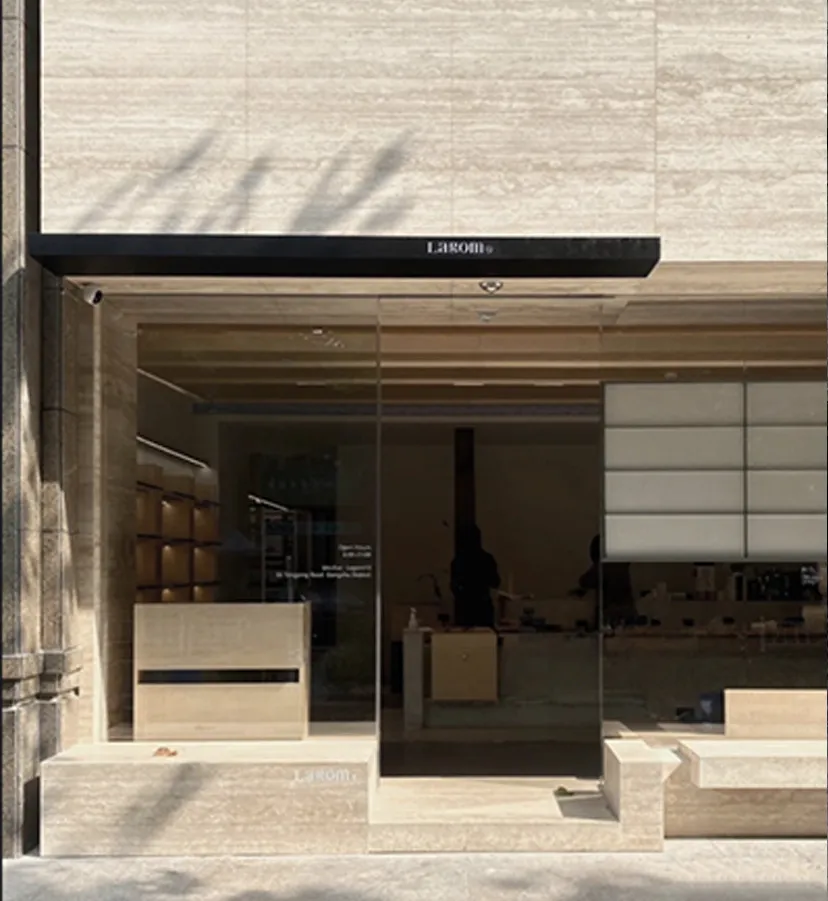Imagine stepping into an operating room where every surface actively fights pathogens—not just resisting them, but eliminating them. This isn't science fiction; it's the revolutionary promise of antibacterial coatings for travertine walls, creating safer surgical environments through hospital wall material innovation.
Why Operating Room Walls Matter More Than You Think
You'd be shocked to learn operating room walls are silent accomplices in hospital-acquired infections (HAIs). Travertine—a porous natural stone—unwittingly harbors pathogens in its microscopic crevices. Standard cleaning? It’s like using a broom on quicksand. Missed spots become breeding grounds for superbugs like MRSA.
Here’s the reality: 95% of hospital surfaces host pathogens that survive for weeks. During surgeries, aerosolized particles settle on walls, turning them into invisible bio-hazard zones. This is where antibacterial coatings become the unsung hero—transforming passive surfaces into active shields.
How Antibacterial Coatings Work: Not Magic, Just Smart Science
The Contact Killers
Coatings like quaternary ammonium compounds (QACs) work like microscopic spears. When bacteria touch the surface, positively charged ions puncture cell membranes. It’s over in seconds— 99.99% of MRSA and E. coli eliminated within 24 hours (ISO 22196 standard). No poison leaks, no resistance buildup.
The Heavy Metal Brigade
Silver and copper ions don’t play fair. They smother pathogens like a weighted blanket, disrupting enzyme systems and DNA replication. Peer-reviewed data shows copper surfaces can slash HAIs by 40%, making them the James Bond of infection control.
Regenerative Ninjas
Photocatalytic coatings with titanium dioxide? They’re the renewable warriors. When light hits them, they produce free radicals that oxidize pathogens. Scratch the surface? They self-clean like lotus leaves. Perfect for high-traffic ORs where equipment scrapes walls daily.
Travertine’s Makeover: From Porous Peril to Pathogen Shield
Natural travertine is gorgeous but treacherous. Its calcite veins soak up fluids like sponges. Traditional sealants fail under betadine spills and disinfection chemicals. Antibacterial coatings penetrate pores like rain on dry earth, creating non-negotiable microbial dead zones .
Permanent Bonding
Coatings like M-Wall Hygienic form covalent bonds with stone. They won’t flake when bumped by gurneys—critical in chaotic trauma bays.
Chemical Warfare Ready
Tested against surgical disinfectants: hydrogen peroxide, quats, sodium hypochlorite. No fading, no degradation.
Invisible Guardian
Maintains travertine’s warm aesthetics—no clinical plastic feel. Available in stone-matching shades from ivory to nutmeg.
Beyond the Lab: ORs That Slashed Infection Rates
Berlin’s Charité Hospital retrofitted ORs with antibacterial travertine. Result? 58% fewer post-op infections in abdominal surgeries. How? Coating neutralityized pathogens shed during wound closure.
In Munich, a cardiac center reported zero HVAC contamination after coating ventilation shafts. Airflow stopped spreading Staph like gossip.
No Demolition Required: Retrofitting Existing ORs
Think coating installation disrupts surgeries? Modern methods are ninja-quiet:
- Surface Prep - No sandblasting. Nanoscale primers etch surfaces at molecular level overnight.
- Application - Electrostatic sprays coat uneven travertine flawlessly. Cure time: 90 minutes.
- Seamless Integration - Corners heat-welded invisibly. Zero gaps for biofilm hideouts.
"We coated ten ORs over weekends without canceling a single surgery." — Facility Director, Stockholm Karolinska OR Wing
Tomorrow’s OR Wall: What’s Next?
Emerging tech will make today’s coatings look primitive:
- Smart Surfaces - Coatings with embedded sensors that glow when pathogen loads spike
- Targeted Pathogen Hunters - RNA-based coatings that recognize specific superbug DNA
- Self-Healing Polymers - Scratch triggers chemical repair in 10 seconds
The Unspoken Revolution
Antibacterial coating for travertine walls isn’t about aesthetics—it’s a silent redefinition of surgical safety. Like penicillin in the 1940s, it quietly transforms battlefields against infection. Every coated surface is a soldier fighting HAIs so surgeons can win the real war inside patients.













